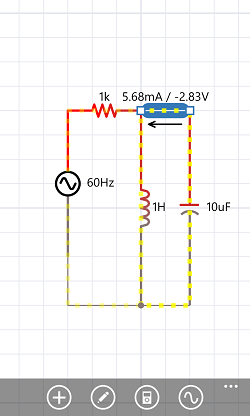

Since we want 5 volts to be output, we must calculate which value of R2 will yield an output of 5 volts. This is the pin which allows us to adjust the voltage to the level we want. Now that we've dealt with the input pin, we must now deal with the adjustable pin (Adj). So therefore, since we want 5 volts as output, we will feed into this regulator 7 volts. Generally, with regulators, unless they are low drop out regulators, you want the input voltage to be about 2 volts higher. Therefore, V IN must be greater than 5 volts. In this circuit, we want a regulated 5VDC as output. Therefore, in order to a get a voltage, V OUT, V IN must be greater than V OUT. They do not and cannot create voltage on their own. Remember, voltage regulators are just devices that regulate voltage down to a certain level. The voltage which enters this pin must be larger than the voltage it is feeding out. This is the pin which, again, receives incoming voltage which the chip will then regulate down. In this circuit, we add a DC voltage supply to the V IN pin of the regulator. This is how a LM317T regulator would look when connected to a circuit so that it supplies a constant DC voltage output. LM317T voltage regulator is used in a wide range in circuits, the most common applications:Ĭommonly used in Desktop PC, DVD and other consumer products The following LM317T circuit schematic is a sample for reference. It’s a reference to make them work in an actual circuit. The input voltage which has to be regulated is given to this pinĪccording to LM317T datasheet, it features:Įliminates the Need to Stock Many VoltagesĬircuit schematic can help us to understand better about how a component or chip is used and worked in circuits.
The regulated output voltage set by the adjust pin can be obtained from this pin It does not need to be exactly like mine, anything with more than 25 turns and a wire diameter higher than 1mm will be just fine.Adjustable Voltage Regulator LM317T functional demo
Lm317 icircuit Pc#
The inductor is from one old PC power supply I had, you can salvage one from a old PC power supply. A 15A or 10A diode bridge will be fine too. It won't be too difficult for you to find one like mine, just search for "diode bridge 25A" on eBay. You can calculate the maximum output with the formula: ((Vout transformer * 1.41) - 3,4).Ī 25A diode bridge, that I have bought on a local hardware store, was used. It will only change your maximum output voltage. You can use a transformer from 12 to 24 volts/5 amp. The 500ohm resistor between the 2N3055 emitter and base is for it don't lose its base-emitter referential, the power supply would work without it, but less stable.įor filtering a 10000uf/50V capacitor was used because it was laying around at my home, but you can use a 4700uf/50V capacitor, just remember to modify the PCB. The 500ohm potentiometer I added on LM317 feedback is to adjust the maximum output. (I used a 0,33ohm because I already had them at home.) The two 0,22ohm resistors on 2N3055 emitters is for ensure that both of them work together preventing one outputting more current than the other leading them to burn. The LM317 controls voltage and the 2N3055 supplies current. So, this is the basic function of the circuit. This starts happening when the IC LM317 is outputting 73mA, as ohm's law show us: 0,6/8,2 = 0,073.Ī easier way to understand it is that the two transistors will start to "help" the LM317 with current, while the LM317 adjusts the voltage. The 2N3055 is on a emitter follower configuration and it will supply current to the output of the power supply. When this voltage drop is higher than 0,6 volts, the TIP42C starts to conduct and it drives the two 2N3055. As current starts to flow through the 8,2ohm resistor, a voltage drop will appear across it. The way the circuit works is very easy to understand.


 0 kommentar(er)
0 kommentar(er)
